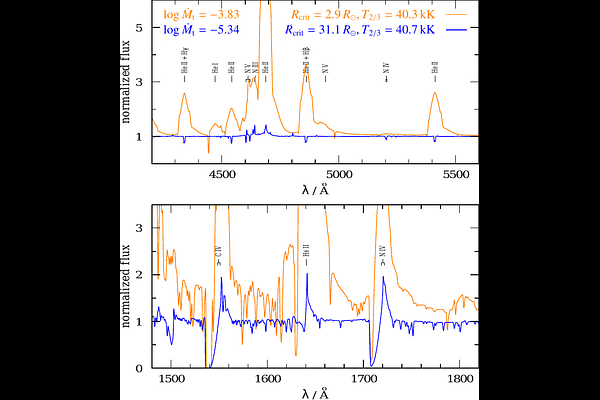Near-Eddington mass loss of hydrogen-rich Wolf-Rayet stars

Near-Eddington mass loss of hydrogen-rich Wolf-Rayet stars
Roel R. Lefever, Andreas A. C. Sander, Matheus Bernini-Peron, Gemma González-Torà, Nicolas M. Moens, Francisco Najarro, Elisa C. Schösser, Gautham N. Sabhahit, Jorick S. Vink
AbstractContext. Very massive clusters and regions of intense star formation such as the center of our Milky Way contain young, hydrogen-burning stars very close to the Eddington Limit. Formally classified as hydrogen-rich Wolf-Rayet stars, the winds and spectra of these stars are distinctively different to the more evolved, classical Wolf-Rayet (cWR) stars. Results. We find an overall downward trend of the mass-loss rate with increasing temperature and decreasing metallicity. However, at SMC metallicities and above, we find a maximum in the wind efficiency with the mass-loss eventually decreasing again at lower temperatures. For intermediate metallicities, we also find strong discontinuities in the mass-loss trends, which do not appear at high or very low metallicities. For the lowest metallicities, a more homogeneous behavior is obtained without any maximum in the wind efficiency. The terminal velocities are generally higher for hotter temperatures. For cooler temperatures, the combined effect of metallicity and mass-loss change significantly reduces the changes in terminal velocity with metallicity. Conclusions. Contrary to cWR stars, the spectral appearance of late-type WNh stars rules out supersonic winds launched at the hot iron bump. Instead, a more extended quasi-hydrostatic regime is necessary. The proximity to the Eddington limit and the complex interactions cause a lot of substructure in the global wind parameter trends. While the strong discontinuities show resemblances to the bi-stability jump predicted for the B-supergiant regime, our models reveal a more complex origin. At sub-SMC metallicity, iron is no longer a major key for setting the mass-loss rate in this WNh regime. Instead, other elements (e.g. nitrogen) and continuum contributions become important.